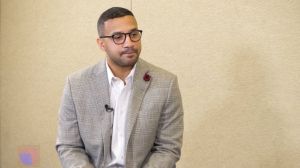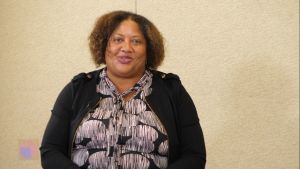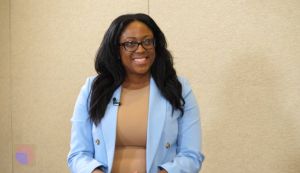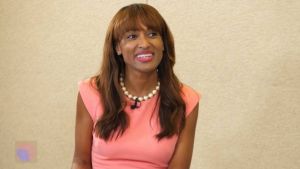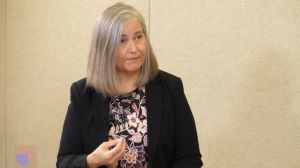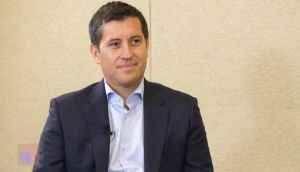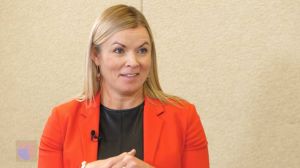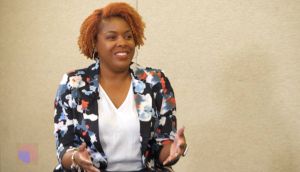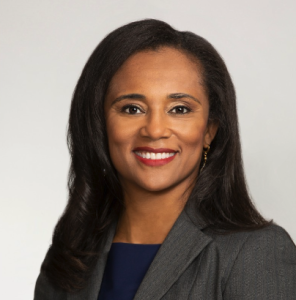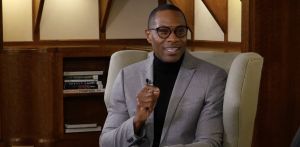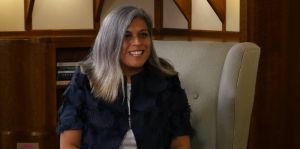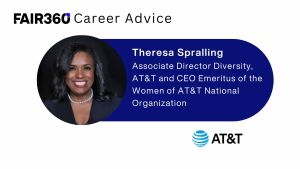By Barbara Frankel
Originally published on Nov. 6, 2014:
What is executive presence The answer has evolved and, most importantly, varies considerably from company to company. But it always involves good grooming, strong communication skills, and the confidence of knowledge and preparation.
We interviewed HR/diversity executives as well as individuals who have been “taught” executive presence at five companies Novartis Pharmaceuticals Corporation, Wells Fargo (No. 9 on the Fair360, formerly DiversityInc Top 50 Companies for Diversity list), Comcast (No. 19) and TD Bank (No. 38).
Here are their tipsand personal stories:
Watch Your Leaders and Know Your Corporate Culture
At some companies, dress is very conservative, even on “casual dress day.” At others, leaders all appear very physically fit. Pay attention to the people whose jobs you aspire tohow they dress, how they look and how they communicate with each other and subordinates.
Linda Verba, Executive Vice President, Head of Service Strategy and Chair, Diversity Leadership Team at TD Bank, and now retired, prefers the term “leadership presence.” She notes, “Folks in leadership roles are always watching what we do every day. The least significant thing sends signals.”
Within the Corporate Culture, Be Authentic

Kimberly Banks MacKay
While following the leads of your top executives, real leaders don’t hide who they arewhether that means gender, race/ethnicity, orientation, having a disability or being “different” in any way.
When Kimberly Banks MacKay entered corporate America in the 1980s, many women thought “executive presence” meant looking as much like the traditional male executive as possible: a suit, a button-down shirt from Brooks Brothers and an “awful ascot.” She recalls: “Many of us were advised by well-meaning mentors not to smile too much, not too look too girly.”
Today, Kimberly is Executive Director and Deputy Compliance Officer at Novartis Pharmaceuticals Corporation. She notes that the definition of executive presence has evolved considerably, and women who don’t fit the white male mold, such as Supreme Court Justices Ruth Bader Ginsburg and Sonia Sotomayor, are still considered strong leaders with formidable presence.

Valerie Cardwell
Valerie Cardwell, Executive Director at Comcast, says that at her company difference is celebrated: “I am an African-American woman. We are different. We look different. In 2014, we still stand out. As you get up in the executive ranks that becomes more and more apparent. Early in my career, I was more concerned that I was heard. Now, I leverage the fact that I think differently and I am more strategic on how I get my ideas and suggestions on the table.”
Real Leaders Need to Know Their Stuff
Looking the part will only get you so far. Real executive presence is based on authoritative knowledge, and that means listening to what people are sayingand always, always being fully prepared.
Kimberly from Novartis Pharmaceuticals Corporation points out that traditionally executive presence was defined by the “wow factor”tone, appearance, stylebut that “only gets you part of the way. That will disappear quickly if it isn’t backed up by credible leadership qualities.”

Linda Verba
Linda from TD Bank says, “People gravitate toward leaders and there are all different kinds of leaders.” She cites as an example a story of a low-key woman in corporate planning and development who “had no lipstick and came late to the meeting.” Yet “she was remarkably astute and when she spoke, she really handled a table of 22 executives with presence and clarity. People were riveted by what she had to say.”
“It’s very much about the ability to win confidence through the interactions we have with others,” notes Martha Soehren, Chief Talent Development Officer at Comcast. “It ranges from how a leader shows up, demeanor, physical presence (including dress), energy level, tone of voice and mindfulness of what’s happening around here. For us, it also has implications of a person’s capabilities, presentation skills, and being forward thinking and inquisitive.”
In a nutshell, she says, “It’s the ability to influence and gain confidence.”
Vanessa Walsh, Senior Vice President, Ledership Development/Engagement at Wells Fargo, emphasizes that true executive presence applies to everyone.

Vanessa Walsh
“It says right in our vision and values that in our culture, everyone in the company is a leader,” she says, adding that real leaders “communicate powerfully and prolifically, inspire and motivate others to high performance.”
Find the Right Mentors and Sponsors
Wells Fargo gives newly hired executives peer mentors, from like demographic groups and cross-cultural groups. They help the new hires navigate the corporate culture.
Ninety-eight percent of the Fair360, formerly DiversityInc Top 50 have formal, cross-cultural mentoring programs, so take advantage. Ask for at least two mentors and use them to understand how to develop your own “brand” and how it works within the corporate environment.
Sponsorship programs are more likely to be organic so it is important to make sure your mentorand other leadersknow who you are and what you can do.
“Executive presence is growth for leaders of all demographics, but we do pay attention to underrepresented groups. Helping the person get a coach or find a mentor” is critical, says Martha from Comcast. She cites Comcast’s Executive Leadership Career Advancement Program, which finds high-potentials (primarily women and Blacks, Latinos and Asians) and assigns them a sponsor who is a senior executive.

Damien Ghee
Damien M. Ghee, Vice President and Relationship Manager at TD Bank, notes how mentors have helped him grow. Damien started at the bank 13 years ago as a part-time customer-service representative while attending Rutgers University. “I talked to my manager at the time about wanting to be a supervisor and they were thinking of me as well. A number of people invested time in me when I really didn’t know I needed investment,” says Damien, who was the first person in his family to attend college.
“The biggest thing I learned was to be a true listener and ask good questions,” he says. He now mentors three people, including one through TD’s MILE (Mentorship in Leadership and Excellence) program, which aligns people based on their passions and focus.
Madhav Gopal, a Senior Director in Technology Operations at Comcast, made the transition from a technical expert to a manager of people. His mentors gave him advice similar to what Damien received. He says he’s had mentors inside and out of the company.

Madhav Gopal
“The best advice I got was that it’s more important to listen than to speak. It’s about deep engagement and having the context and the credibility,” he says. “Another thing that has helped me is to learn not to go to senior leadership with a problem but with a solution.”
Kimberly from Novartis Pharmaceuticals Corporation emphasizes that executive presence is not a standard, rather it is a competency that is grounded in one’s own authentic nature. Thus, when mentoring people, it’s crucial to help people understand and leverage their own style. A graduate of the Rutgers School of Law, she now mentors those in the Minority Student Program. For example, she once mentored a young woman who was very quiet. “She is not going to dominate a room when she enters but she is smart and has important things to contribute,” Kimberly says. “As a strategy, we worked on identifying three things she wanted people to know before she left the room. She still made her mark without trying to be chatty or otherwise someone she’s not.”
Learn What Else Your Company Offers

Martha Soehren
Besides mentoring, there are many worthy corporate programs to help people, especially those from underrepresented groups, develop executive presence. Martha at Comcast notes that Comcast Executive Vice President and President and CEO of Comcast Cable Neil Smit initiated a program specifically for Comcast women two-and-a-half years ago. Working with the Wharton School at the University of Pennsylvania, the program has given about 135 women so far a week of residence where they focus on leadership, executive presence and what they need to get into senior management. A big emphasis is on the women helping each other and, Martha says, that’s a change.
“I remember when it felt like women didn’t embrace and help other women,” she says. “These women are so invested in giving feedback and helping each other.”
At Novartis Pharmaceuticals Corporation, many programs help develop executive presence, including working with executive coaches, workshops and the ability to videotape yourself and see how you present (with expert advice). Among others, the Executive Female Leadership Program helps high-potential women create winning styles and get promoted. “And we have a strong culture of mentoring and sponsorship,” Kimberly says.
At TD Bank, Linda says the emphasis is on having frank, open conversations during performance appraisals (personal-development plans) to understand what motivates people and how their “leadership presence” can be developed. There is also significant emphasis on “building your brand” and maximizing the differences that make each individual unique.
And Vanessa at Wells Fargo notes that talent programs, especially those benefiting people from underrepresented groups, capitalize on different communication styles. “It’s not about saying ‘Do it one way.’ It’s about being authentic for you and meaningful for your audience. We really want people to understand what they are good at doing and how they can leverage their strengths and talents so they can be good leaders.”



